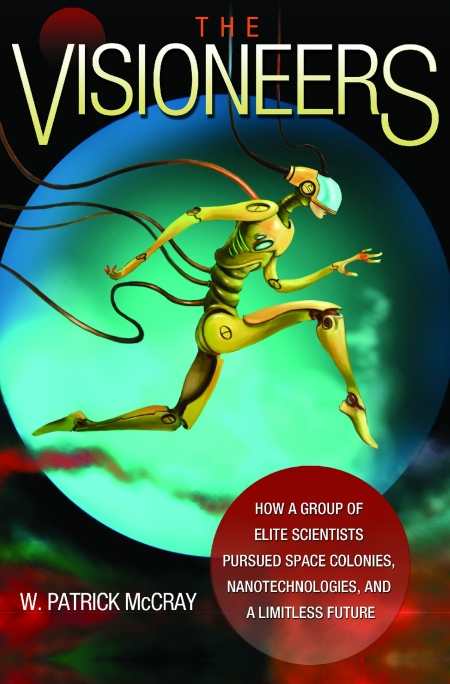The Visioneers
How a Group of Elite Scientists Pursued Space Colonies, Nanotechnologies, and a Limitless Future
Limits haunt the pages of The Visioneers and the minds of its titular scientists. In the 1970s, when the visioneers’ narrative begins, the world was facing the idea of a future defined by constraints: limited space, limited resources, limited everything. Some, however, rebelled against this idea, seeing in technology the potential to escape these looming confines.
W. Patrick McCray, a historian at the University of California, Santa Barbara, and the author of two previous books, introduces us to two men he defines as visioneers. The first, Gerard O’Neill, a Princeton physicist, reached national prominence in the ’70s by popularizing the idea of space colonies while doing extensive theoretical work to demonstrate their viability. The second, Eric Drexler from MIT, took the torch of visioneering in the ’80s and ’90s and became the face of nanotechnology. Readers may rightly note that both space colonization and nanotechnology still carry societal cachet as the staples of “futuristic” technology; these are not stories of technological revolution so much as the story of the idea of technological revolution.
What, then, is a visioneer? Gerard O’Neill once described himself as “a romantic, an idealist, and a practical physicist and engineer”—McCray calls this “a succinct definition of a visioneer.” These are people with one foot planted firmly in the known and the other thrust unabashedly into the future.
The overarching narrative of The Visioneers—that of humankind’s struggle against limits real and imagined—is compelling, and no less so because of how effectively it reflects the questions of technology surrounding today’s big fears like peak oil and global warming. McCray’s prose is never less than readable, but there is an inescapable sense of academic formality about the proceedings. In particular, the introductory chapter takes great pains to state the thesis of the book and tell the reader how, precisely, this book will go about demonstrating it. One wishes the book simply jumped to O’Neill’s quest for the humanization of space.
Regardless, The Visioneers does accomplish its stated goal, providing a contextualized definition of a “visioneer,” and chronicling the successes and pitfalls of science-as-social-movement. The fears that motivated O’Neill and Drexler are fundamentally the same fears of an uncertain future that plague us today. The Visioneers is a history through and through, and, as such, it reads better for edification than entertainment. That said, it is an extremely edifying and well-researched history. Recommended for technology buffs, doomsayers, and anyone with an interest in the intersection of science, technology, and society.
Reviewed by
Kenrick Vezina
Disclosure: This article is not an endorsement, but a review. The publisher of this book provided free copies of the book to have their book reviewed by a professional reviewer. No fee was paid by the publisher for this review. Foreword Reviews only recommends books that we love. Foreword Magazine, Inc. is disclosing this in accordance with the Federal Trade Commission’s 16 CFR, Part 255.

